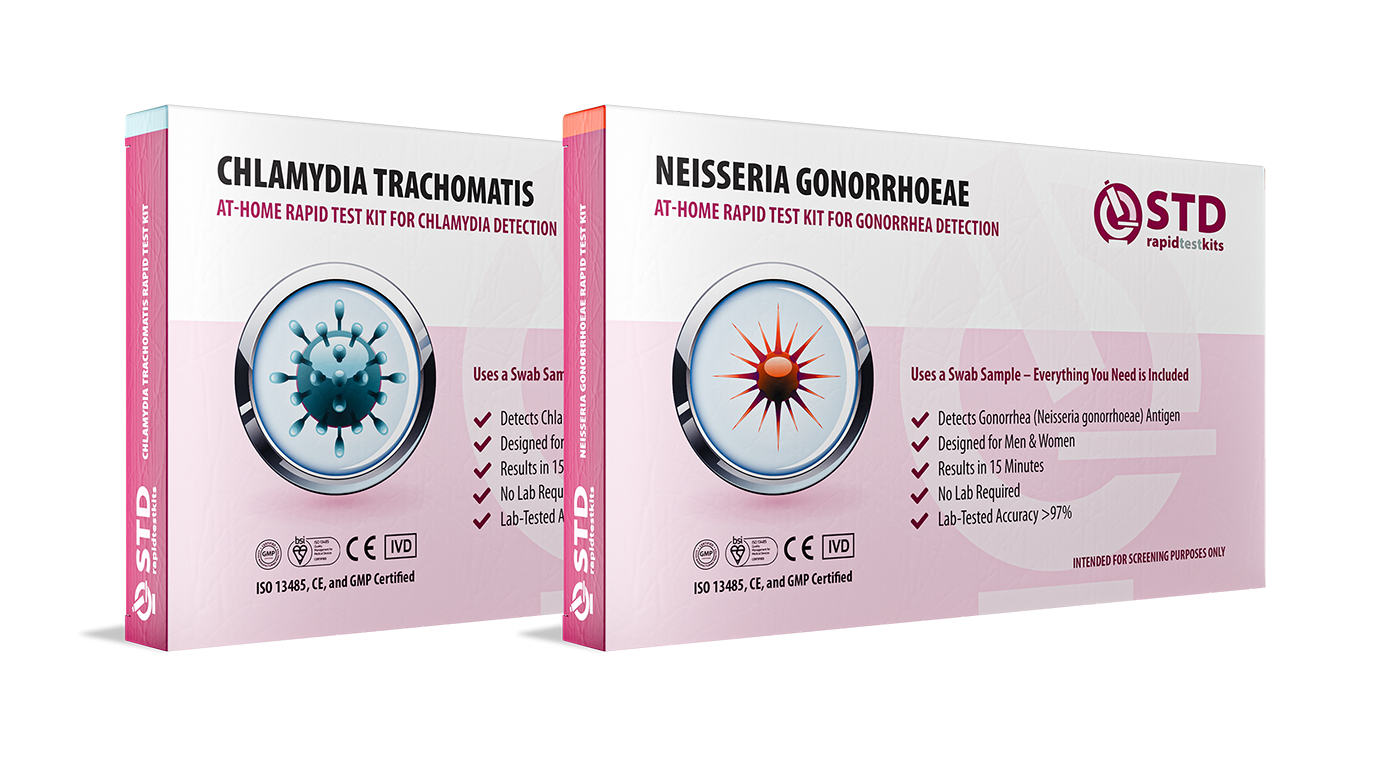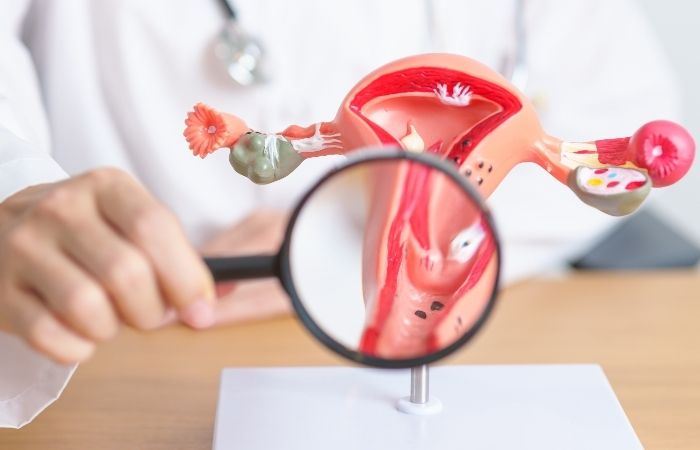Painful Peeing, No UTI? Here's What Else It Could Be
Why Are STDs Misdiagnosed as UTIs?
Several factors contribute to the confusion between STDs and UTIs:
- Symptom Overlap: They all share burning urination, frequent urination, and pain in the pelvis.
- Assumptions in Diagnosis: Several physicians assume that young, healthy women with UTI rather than STD, especially if they do not complain of recent sex.
- Same Testing Techniques: Both STDs and UTIs may be identified by urinalysis tests, but standard UTI testing does not test for STDs unless prescribed.
- Abuse of Antibiotics: UTIs are typically treated with antibiotics, which can sometimes cover up STD symptoms without killing the infection, leading to recurrent issues.
For better understanding, let's discuss the most common misdiagnosed STDs and how they can be differentiated from UTIs.

Chlamydia vs. UTI: Why It's Often Misdiagnosed
Why the Confusion Happens
Chlamydia is among the most frequently misdiagnosed STDs because it produces symptoms that are nearly identical to a UTI:
- Painful urination
- Pelvic pain
- Need to urinate all the time
Since so many doctors believe that young women with urinary symptoms have a UTI, chlamydia is often missed until symptoms worsen.
What Studies Say
A 2011 study found that up to 30% of women diagnosed with UTIs actually had chlamydia or gonorrhea.
Another CDC report indicated that more than 50% of chlamydia infections are asymptomatic, so many individuals are unaware they have it until complications occur.
How to Tell the Difference
- UTIs create cloudy, odoriferous urine, while chlamydia usually does not.
- Chlamydia has the potential to cause discharge from the vagina, which UTIs do not.
- Painful sex is a warning sign for an STD, not a UTI.
Best Testing Approach
A standard UTI test will not detect chlamydia. If your symptoms linger, ask for an STD panel or an at-home STD test kit that detects chlamydia.
Check Your STD Status in Minutes
Test at Home with RemediumChlamydia & Gonorrhea Test

 For Men & Women
For Men & Women Results in Minutes
Results in Minutes No Lab Needed
No Lab Needed Private & Discreet
Private & DiscreetOrder Now $49.00 $98.00
For all 2 tests
Gonorrhea vs. UTI: The Silent Infection
Why the Confusion Happens
Like chlamydia, gonorrhea is mistaken for a persistent UTI because it causes:
- Burning on urination
- Pelvic pain
- Urination frequency
Since gonorrhea can be asymptomatic or produce very mild symptoms, many individuals do not get tested because they assume it is a mild UTI that will resolve on its own.
What Studies Say
One study published in the Journal of Clinical Microbiology found 25% of women who were treated for UTIs in emergency rooms actually had gonorrhea.
Another study found that misdiagnosed gonorrhea leads to pelvic inflammatory disease (PID) if it is not treated.
How to Tell the Difference
- Gonorrhea will often cause yellow or green discharge, but UTIs won't.
- Gonorrhea, not UTIs, can cause spotting between periods.
- UTIs rarely cause throat infection, but gonorrhea could.
Best Testing Approach
Request a gonorrhea test from your doctor or buy an at-home STD test kit that checks for gonorrhea and other conditions.

Trichomoniasis vs. UTI: The Forgotten STD
Why the Confusion Happens
Trichomoniasis (trich) is a low-profile STD because it has vague symptoms that readily mix it up with a UTI:
- Frequent urination
- Burning sensation
- Pelvic discomfort
Physicians commonly misdiagnose trich as a UTI and administer unnecessary antibiotics that won't treat the actual infection.
What Studies Say
The CDC has indicated that 70% of trichomoniasis is asymptomatic, thus people unknowingly transmit it.
In a study presented in Primary Care, it was discovered that most of the women diagnosed with UTIs had trichomoniasis instead.
How to Tell the Difference
- Trich produces frothy yellow-green discharge, but UTIs do not.
- Trich is associated with a pungent fishy smell, but UTIs are not.
- Trich, unlike UTIs, may trigger genital itching and discomfort.
Best Testing Approach
Trich is not included on a standard UTI test. Get an STD panel that includes trich or an at-home test kit.
Check Your STD Status in Minutes
Test at Home with Remedium8-in-1 STD Test Kit

 For Men & Women
For Men & Women Results in Minutes
Results in Minutes No Lab Needed
No Lab Needed Private & Discreet
Private & DiscreetOrder Now $149.00 $392.00
For all 8 tests
Genital Herpes vs. UTI: When Painful Urination is a Red Flag
Why the Confusion Happens
Genital herpes is perhaps the most underdiagnosed STD since early outbreaks create a burning sensation with urination, which replicates a UTI. Most people think they have a benign UTI when, in fact, they are going through their initial herpes outbreak.
What Studies Say
According to a Journal of Infectious Diseases study, numerous women diagnosed with recurrent UTIs actually had herpes outbreaks.
Another 2022 research confirmed that herpes also leads to inflammation of the bladder, which triggers symptoms practically identical to a UTI.
How to Tell the Difference
- Herpes will usually lead to painful blisters or sores, not UTIs.
- Preceding tingling or itching is common with herpes but not with UTIs.Flu-like symptoms (inflamed glands, fever) and lower back pain may accompany herpes outbreaks.
Best Testing Approach
Since herpes will not show up on a urine test, request a herpes blood test or swab test. Home STD test kits may not include herpes testing, so make sure to check before purchasing.

Mycoplasma Genitalium vs. UTI: The Silent Infection
Why the Confusion Happens
Mycoplasma genitalium (MG) is a less prevalent STD that has a tendency to cause chronic urinary symptoms, leading to recurring UTI misdiagnoses. It is resistant to some antibiotics, and people diagnosed with "chronic UTIs" may actually have MG.
What Studies Say
The CDC lists Mycoplasma genitalium as an emerging cause of misdiagnosed UTIs, particularly in women.
A 2019 study found that up to 50% of women with recurring UTI symptoms actually had Mycoplasma genitalium.
How to Tell the Difference
- MG infections persist on and after UTI antibiotics (e.g., nitrofurantoin or trimethoprim) have been ingested.
- MG causes spotting on and in between periods, in contrast to UTIs.
- MG can take weeks to become symptomatic, in contrast to UTIs.
Best Testing Approach
Routine UTI and STD screening won't detect on MG. A unique Mycoplasma genitalium test is necessary, which could be located in some labs or by means of some at-home test kits.
Check Your STD Status in Minutes
Test at Home with Remedium7-in-1 STD Test Kit

 For Men & Women
For Men & Women Results in Minutes
Results in Minutes No Lab Needed
No Lab Needed Private & Discreet
Private & DiscreetOrder Now $129.00 $343.00
For all 7 tests
HPV & Cervical Infections vs. UTI: The Long-Term Risk
Why the Confusion Happens
Certain HPVs and cervical infections can create urinary discomfort and lead to misdiagnosed UTIs. In other cases, cervical infection from HPV or precancerous lesions can be responsible for painful urination and pelvic discomfort.
What Studies Say
In 2021, a study published in American Journal of Obstetrics & Gynecology found that cervical inflammation caused by HPV can be misinterpreted as a chronic UTI.
The CDC states that asymptomatic high-risk HPV infections can last for years, often attributed to frequent UTIs.
How to Tell the Difference
- UTIs will generally resolve with antibiotics, but HPV symptoms persist.
- Unusual bleeding during sex is an HPV symptom but not a UTI symptom.
- Pelvic pressure or pain that isn't related to urination may be a sign of a cervical issue rather than an infection of the bladder.
Best Testing Approach
Pap smears and HPV testing are required to detect cervical abnormalities. At-home STD testing does not screen for HPV, so a doctor's visit is required.

STD vs UTI: How to Tell the Difference
To ensure you get the right diagnosis:
- Don't play doctor: UTIs and STDs share similar symptoms, and self-diagnosis can bring unnecessary misery.
- Ask for comprehensive testing: Many clinics don’t automatically test for STDs when checking for UTIs. Request a full STD panel if symptoms persist.
- Consider at-home STD test kits: If you’re uncomfortable going to a clinic, at-home test kits offer a discreet, accurate alternative for many common STDs.
- Watch for symptoms: Pay attention to whether symptoms persist after taking antibiotics or whether they include discharge, itching, or sores—signs of an STD and not a UTI.
- Don't ignore repeated UTIs: If you have been repeatedly treated for UTIs without getting relief, you might consider having an STD test.
Frequently Asked Questions
1.- Is a UTI ever mistaken for an STD?
Yes, because UTIs and STDs share the same symptoms like burning during urination and pelvic pain. The majority of STDs are incorrectly diagnosed as UTIs, especially in women.
2.- Can an STD cause a UTI?
STDs do not directly result in UTIs, but they can lead to irritation of the urinary tract and make infection more likely.
3.- Can a UTI test detect STDs?
No, standard UTI tests do not screen for STDs. If you suspect an STD, you need a different STD test.
4.- How can I tell if I have a UTI or an STD?
The only way to be sure is to get tested. But if you have discharge, itching, or sores on your genitals, it's likely an STD.
5.- Can I get both a UTI and an STD at the same time?
Yes, having one doesn't prevent you from getting the other. Some people get UTIs after sex, along with an STD.
6.- Are at-home STD tests effective?
Yes, FDA-approved at-home STD test kits work for chlamydia, gonorrhea, trichomoniasis, and other infections.
7.- Will a UTI go away by itself?
Some small UTIs might clear up without antibiotics, but recurring ones require antibiotics. STDs will not go away by themselves.
8.- Do men get UTIs, or women only?
Men do develop UTIs, although much less frequently than in women. If a man develops urinary symptoms, an STD is more probable.
9.- Why will doctors misdiagnose STDs as UTIs?
Physicians will tend to think that urinary symptoms are UTIs, especially in young females, without screening for STDs.
10.- Can I treat a UTI and STD simultaneously?
Yes, but not necessarily all antibiotics are effective for both. If in doubt, get both UTIs and STDs tested before treating.

Get the Right Diagnosis
Confusing an STD for a UTI can result in late treatment, complications, and unconsciously passing infection. Since both have overlapping symptoms, the only way to know for sure is by getting a test.
Your Options for Testing
- Doctor's Visit: Order an STD panel and UTI test for certainty.
- At-Home STD Test Kits: A private, convenient option for discreet testing. Check out ours here.
If you’re unsure about your symptoms, don’t wait. Knowing the difference between a UTI and an STD can protect your health. Schedule a test or talk to your doctor now.
Sources
1.- UTI or STD: How to Spot the Difference – Evvy
2.- UTI vs. Chlamydia: How to Tell Them Apart – Evvy
3.- UTI vs. STI: Which One Is It? – Verywell Health
4.- Debunking 6 Urinary Tract Infection Myths – Mayo Clinic Health System
5.- Mayo Clinic Q and A: 6 UTI Myths and Facts – Mayo Clinic News Network










